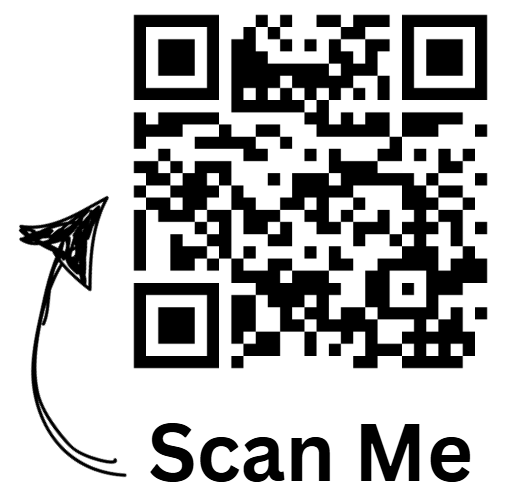Author: POS Supply Date Posted:1 March 2025
The Ultimate Guide to QR Barcodes
Discover how QR barcodes are transforming industries! Learn about their uses, benefits, and how to generate them effortlessly in our latest guide. Read more now!
The Ultimate Guide to QR Barcodes: Everything You Need to Know
In today’s fast-paced digital world, QR barcodes have become an indispensable tool for businesses and consumers alike. These small, square-shaped codes are everywhere—on product packaging, advertisements, business cards, and even restaurant menus. But what exactly are QR barcodes, and why are they so significant? In this article, we’ll explore the ins and outs of QR barcodes, including their contents, generation process, applications, and benefits. By the end, you’ll understand why QR barcodes are a game-changer in the modern world.
1. Introduction to QR Barcodes
QR (Quick Response) barcodes are two-dimensional matrix barcodes that store information both horizontally and vertically. Unlike traditional barcodes, which can only hold a limited amount of data, QR barcodes can store significantly more information, including text, URLs, and other data types. They were first developed in 1994 by the Japanese company Denso Wave for tracking automotive parts but have since evolved into a versatile tool used across industries.
The significance of QR barcodes lies in their ability to bridge the physical and digital worlds. With just a quick scan using a smartphone camera, users can access websites, view product details, make payments, or even connect to Wi-Fi networks. This seamless interaction has made QR barcodes a cornerstone of modern technology, enabling businesses to engage with customers in innovative ways.
2. Contents of QR Barcodes
QR barcodes are incredibly versatile and can encode a wide range of information. Some of the most common types of data stored in QR barcodes include:
-
URLs: Direct users to websites, landing pages, or online resources.

-
Text: Display plain text, such as instructions, messages, or promotional content.
-
Contact Information: Encode vCards to save contact details directly to a user’s phone.
-
Wi-Fi Credentials: Share Wi-Fi network names and passwords for easy connectivity.
-
Payment Information: Facilitate quick payments through platforms like PayPal, Venmo, or bank apps.
-
Event Details: Store calendar events, tickets, or boarding passes.
-
Geolocation Data: Provide directions or location-based information.
The ability to store diverse types of data makes QR barcodes a powerful tool for communication and interaction.
3. Generation of QR Barcodes
Creating a QR barcode is a straightforward process, thanks to the availability of user-friendly tools and software. Here’s a step-by-step outline of how QR barcodes are generated:
-
Choose the Data Type: Decide what information you want to encode (e.g., a URL, text, or contact details).
-
Select a QR Code Generator: Use online tools like QR Code Generator, QRStuff, or software like Zebra’s ZebraDesigner label printing software.
-
Input the Data: Enter the relevant information into the generator.
-
Customize the Design: Adjust the color, size, and shape of the QR code to match your branding or preferences.
-
Generate and Download: Create the QR code and download it in your preferred format (e.g., PNG, JPEG, or SVG).
-
Test the QR Code: Scan the code with a smartphone to ensure it works correctly.
Many businesses use specialized barcode label printers, such as those from Zebra, to generate high-quality QR barcodes for labels, packaging, and other applications.
4. Applications of QR Barcodes
QR barcodes have found applications across a wide range of industries, revolutionizing how businesses operate and interact with customers. Here are some notable use cases:
-
Retail: QR barcodes on product packaging provide customers with access to detailed product information, reviews, and promotions.
-
Marketing: Brands use QR codes in advertisements to drive traffic to websites, social media pages, or promotional videos.
-
Logistics: QR codes streamline inventory management and tracking, enabling efficient supply chain operations.
-
Healthcare: Hospitals use QR codes to store patient information, track medical equipment, and manage prescriptions.
-
Hospitality: Restaurants and hotels use QR codes for contactless menus, check-ins, and payments.
-
Events: QR codes are used for ticketing, attendee registration, and access control at conferences and concerts.
The versatility of QR barcodes makes them a valuable asset in virtually any industry.
5. Benefits of QR Barcodes
QR barcodes offer numerous advantages for both businesses and consumers:
-
Convenience: Users can access information or complete transactions with a simple scan, eliminating the need for manual input.
-
Speed: QR codes enable instant access to data, saving time for both businesses and customers.
-
Cost-Effective: Generating and printing QR codes is inexpensive, making them an affordable marketing and operational tool.
-
Enhanced Customer Engagement: QR codes provide an interactive way for businesses to connect with their audience, offering personalised experiences.
-
Versatility: QR codes can be used for a wide range of purposes, from marketing to logistics, making them a multi-functional tool.
-
Trackability: Businesses can track scans to measure the effectiveness of campaigns and gain insights into customer behavior.
For consumers, QR barcodes simplify everyday tasks, from making payments to accessing information on the go.
6. Conclusion
QR barcodes have transformed the way we interact with the world around us, offering a seamless bridge between the physical and digital realms. From retail and marketing to logistics and healthcare, their applications are virtually limitless. With their convenience, speed, and versatility, QR barcodes have become an essential tool for businesses looking to enhance customer engagement and streamline operations.
If you’re looking to incorporate QR barcodes into your business, Zebra’s barcode label printers are an excellent choice. All Zebra printers come with free label printing software ZebraDesigner that includes features to generate QR barcodes easily, ensuring high-quality and reliable results. Whether you’re printing labels for products, packaging, or logistics, Zebra’s solutions make it simple to harness the power of QR barcodes.
Embrace the future of connectivity and efficiency with QR barcodes—your gateway to a smarter, more interactive world.



